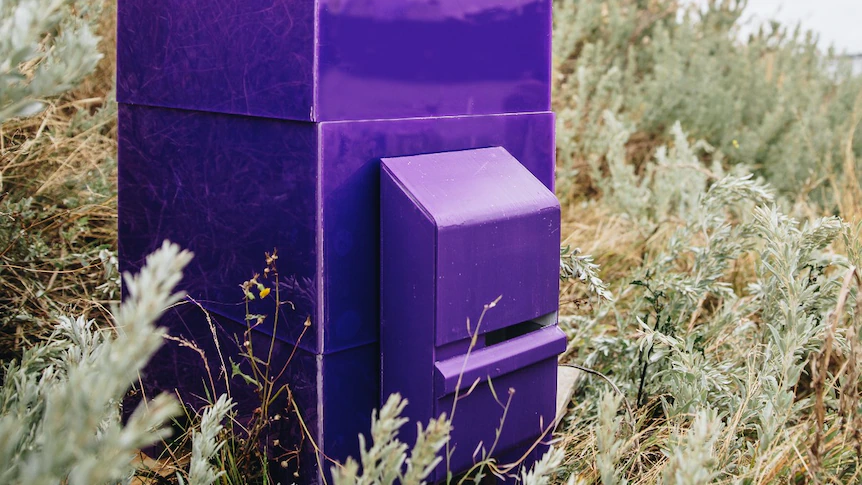New artificial intelligence technology used to protect bees from Varroa Destructor mite
Australia has a new weapon in the fight against the Varroa Destructor mite that has devastated bee populations in other countries and wrecked industries worth hundreds of millions of dollars.
Key points:
- The new sentinel hives can photograph bees and detect any abnormalities
- The technology involves a 360 degrees camera and artificial intelligence
- Biosecurity inspectors say it will make detection of threats such as Varroa mites much easier
A trial is underway at the Port of Melbourne involving new sentinel hives that use high-tech cameras and artificial intelligence to detect the mite on bees that can hitch a ride to Australia on container ships.
The hives are purple because bees apparently love purple.
The project is being trialled alongside existing sentinel hives at the Port of Melbourne after the success of earlier attempts in New Zealand, where the Varroa Destructor wreaked havoc on the local bee industry.
The entrance to each of the purple hives houses a 360 degree camera that captures an image of every bee that enters.
An algorithm then helps to identify anything unusual about a bee's appearance.
Australian company Xailient helped develop the AI technology the hive uses to examine potentially hundreds of bees flooding into a hive and send alerts in real time if it spots an anomaly.
"It's quite difficult to do, it's like looking for a needle in a haystack, in a haystack," Xailient chief technology officer Shivy Yohanandan said.
"Just like teaching a child, you need to train it and over time it gets better and better."
Making the job easier for biosecurity monitors
Australia has so far been lucky not to have an invasion of Varroa Destructor, but has certainly come close, according to Agriculture Victoria apiary biosecurity officer Nikki Jones.
"In Victoria, the only detection we’ve had was on a ship just over behind us here [at Port Melbourne] in 2018 and that was reported onboard the ship," she said.
Supplied
The sentinel hives set up at Victorian ports are currently checked for invasive species every few weeks, and Ms Jones hoped the technology would make that job a lot easier.
"It means instead of me coming at my regular time intervals for surveillance, I can be alerted and come down straight away as soon as we get a detection."
The algorithm the technology uses also has the potential to be tweaked to identify other pests that may pose a threat to bee populations.
Australian beekeepers 'the luckiest in the world'
The Varroa Destructor mite invaded New Zealand in 2000, causing the loss of half of all beekeeping enterprises in the country.
Australia's Agriculture Department estimates the infestation will cost the New Zealand industry close to $AU500 million over 35 years.

Supplied: Alex Wild
)Kallista beekeeper Bec McBride said Australia was fortunate to be the only country where Varroa Destructor had not yet had an impact.
"We are the luckiest beekeepers in the world I think," she said.
"It's always front of mind, we're always talking about it, obviously everyone wants to know more about it, how we're going to handle it if it does happen."
The local industry is also spared the need for chemicals in hives to protect against the Varroa mite.
"Australian bees wax is very well sought after world wide in the cosmetic industry because it's the purest in the world," Ms McBride said.








Gloss